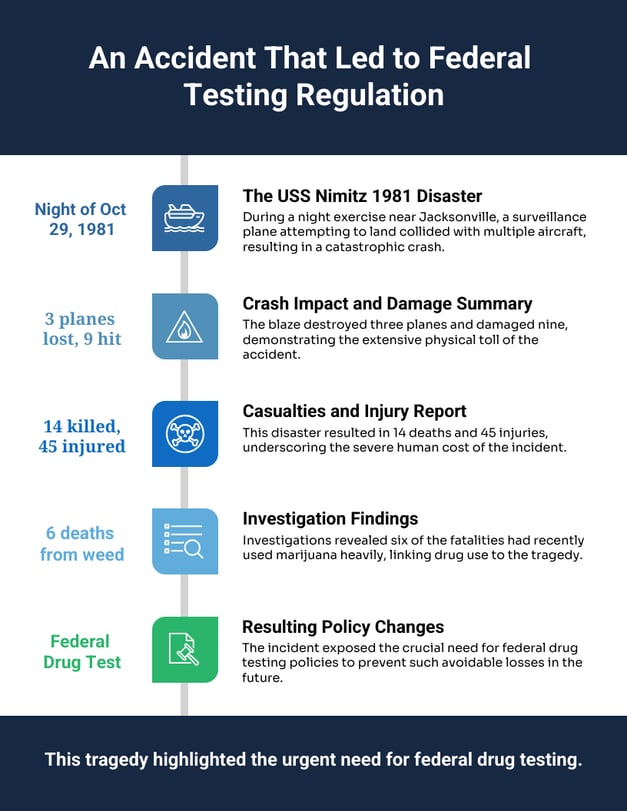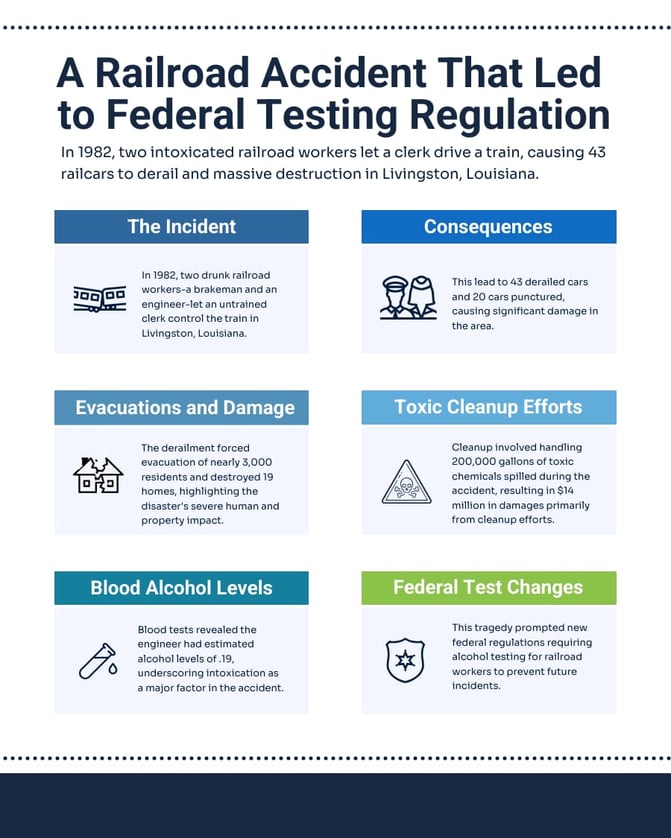Being named a Designated Employer Representative (DER) isn’t just a title—it’s a critical responsibility. For railroads and other Department of Transportation (DOT) regulated organizations, the DER serves as the frontline decision-maker when it comes to drug and alcohol testing. In this first session of our Mastering DER Skills series, we get into what the DER role really requires, why it matters, and how to understand it fully—and apply it the same way, every time.
Whether you’re new to the DER role or looking to strengthen your program, this overview offers the foundation every DER needs to uphold safety for their team and stay compliant.

Let’s start by clearing up a common misconception: a DER doesn’t represent the employee—they represent the employer. That distinction matters. According to DOT Part 40, a DER is the person authorized to:
Every DOT-regulated employer must designate a DER. That person must be an employee of the company—not a contractor or service agent.
Things happen—sick days, vacations, emergencies. Having an assistant DER ensures your program doesn’t stall. It's not about splitting responsibilities; it’s about maintaining consistency when your primary DER isn’t available.
Many DERs also create a dedicated hotline or contact number to make sure collectors and supervisors can reach someone right away—especially during time-sensitive situations like shy bladder collections or alcohol-only tests.
An effective DER isn’t just compliant—they’re consistent. They:
DERs also need to be known. If your name and contact info aren’t printed on the chain of custody and alcohol testing forms, you may be creating delays or confusion in the field.
Understanding Why Drug and Alcohol Testing Exists:
DOT testing regulations didn’t appear out of nowhere. They were a direct response to preventable tragedies—many of them fatal. As Holly Rainwater shares, “This regulation is here because it was written in blood.”
USS Nimitz – 1981
During a night training exercise off the coast of Jacksonville, Florida, a surveillance plane attempting to land on the USS Nimitz clipped several parked aircraft, crashed into more planes near the bow, skidded off the deck, and exploded.
The Navy later reported that 6 of the 14 killed had heavily used marijuana shortly before the crash.
At the time, there was no federal drug testing in place. This incident—and others like it—made clear how high the cost of inaction could be.

Livingston, Louisiana – 1982
Two intoxicated railroad crew members—a brakeman and an engineer—let a clerk take control of a train. The result:

Railroad Incidents – 1970 to 1985
Over this 15-year period, drug or alcohol impairment was linked to at least 28 train accidents and 20 fatal train incidents, leading to:
Lives were lost. Communities were disrupted. The financial and emotional impact was staggering.
These fatal accidents underscored the urgent need for regulation. In response, the Federal Railroad Administration (FRA) began developing federal testing requirements, which became policy by 1985.
.jpg?width=651&height=842&name=The%20Impact%20of%20Drug%20and%20Alcohol%20Use%20on%20Rail%20Safety%20(1970%E2%80%931985).jpg)
When DERs remember these sobering results, it becomes easier to explain the purpose of testing clearly and directly—and reinforces why their role matters every day.
This isn’t about checking boxes. It’s about protecting lives.
There’s no official certification required to be a DER, but training is highly encouraged. Courses from organizations like NDASA or even agency-specific training (such as from the Federal Transit Administration FTA) offer critical insight into:
Some DERs even go a step further and get trained in the actual collection process. You don’t have to perform collections—but understanding what collectors go through helps you spot red flags and ask more informed questions when issues arise.
![]() Looking for practical, ongoing drug and alcohol testing support?
Looking for practical, ongoing drug and alcohol testing support?
Explore our webinars, blogs, and articles to help you make compliance clearer and more manageable.
👉 Visit the “Resources” section on our website
Policies: Keep Them Separate and Specific
One of the most avoidable mistakes DERs make is blending federal and company-specific policies into a single document. Keep them separate.
Meanwhile, your company policy can cover state-specific issues—like recreational marijuana use—and how your organization handles those cases outside of DOT rules. Just make sure your policies are up-to-date, accessible to employees, and easy to understand.
Being a DER isn’t just about checking forms or logging results. It’s about protecting people. It’s about ensuring your team is safe to do their jobs. And it’s about being a leader others trust in moments that matter.
If you’re taking on this responsibility—or supporting someone who is—give it the time, training, and attention it deserves. The people around you are counting on it.
This is just the beginning. Each part of the Mastering Your DER Role series builds on the last covering real scenarios and best practices for testing and compliance.
🎥 Watch the full webinar video with Holly Rainwater for detailed guidance, participant Q&A, and real-world examples. 👉 Click here to watch
Part 2: Getting It Right: Step-by-Step Guidance for Alcohol and Drug Testing Procedures
🎥 Webinar video
Part 3: Test Exceptions
🎥 Webinar video
Part 4: Return to Work
🎥 Webinar video
📚 Catch up on our demand webinars and find more practical resources at https://www.sparkts.net/on-demand-webinars.
Want to Learn More?
We’ll continue exploring topics in future sessions of Mastering Your DER Role. If you have a drug testing scenario you’d like us to cover—or want help strengthening your program—reach out anytime.
You don’t have to navigate this alone. We’re here to support you in doing this critical work correctly, confidently, and with care.
📩 Email us at DAT@sparkts.net
📞 844-827-5371
Spark TS, a railcube company, is a leader in offering safety and compliance software and services solutions for the railroad and transportation industries. Spark TS set the standards for the CFR Part 243 Training Rule implementation with Rail Tasker™, a railroad mobile application for building safer work environments including operations testing, safety alert briefings, training, and are industry experts in CFR Part 40 DOT Workplace Drug and Alcohol Testing Programs.
Spark TS, a railcube company provides Hours of Services (HOS), Time Tracking, Electronic Rule Books, and Asset Management services.
railcube is a modern, modular platform that unifies rail operations—replacing spreadsheets and siloed systems with one streamlined solution. From compliance tracking to crew planning and asset management, railcube simplifies complex workflows and scales with your operation. Start with what you need, then expand seamlessly as your business grows.
For Designated Employer Representatives (DERs), drug and alcohol testing doesn’t always follow a clean checklist. Real-world scenarios can be messy. Rules can overlap. And decisions made in a split ...
For Designated Employer Representatives (DERs), drug and alcohol testing doesn’t always follow a clean checklist. Real-world scenarios can be messy. Rules can overlap. And decisions made in a split ...
In Part 2 of our DER series, we break down the exact steps—and common errors in audits—across both alcohol and urine drug testing procedures. If your clinic or collection site hasn’t revisited your ...
Being named a Designated Employer Representative (DER) isn’t just a title—it’s a critical responsibility. For railroads and other Department of Transportation (DOT) regulated organizations, the DER ...
© Copyright 2025 | All Rights Reserved | Privacy Policy | Terms of Use | Minneapolis Web Design by BizzyWeb